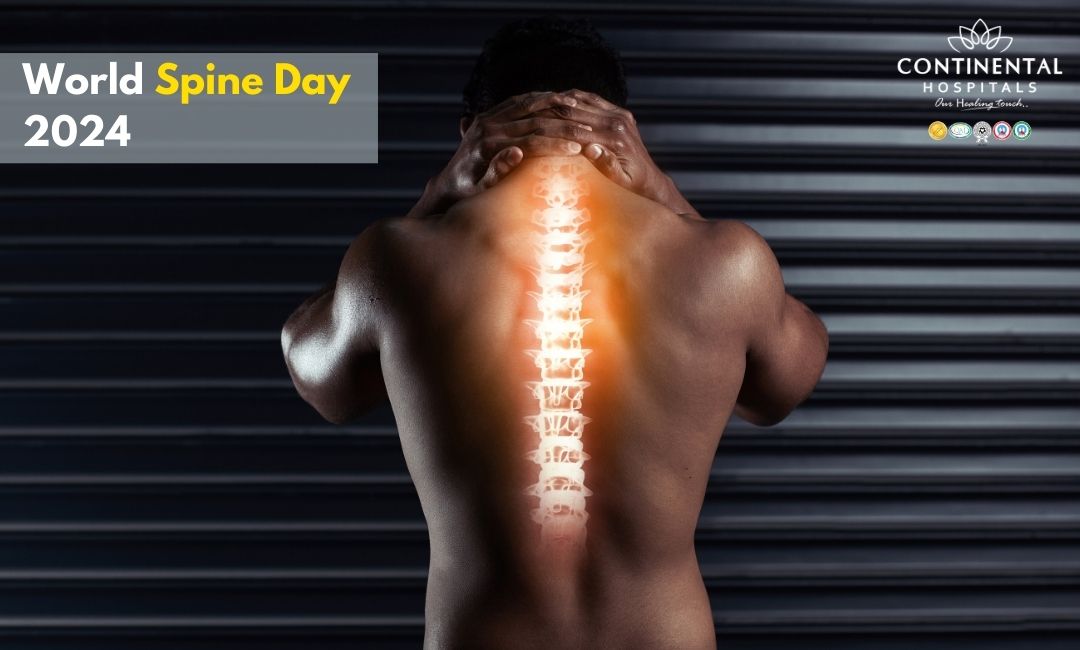World Spine Day (WSD), observed annually on October 16th, is a global initiative to promote spinal health and prevent spinal disorders. It highlights the significance of maintaining a healthy spine through awareness, education, and advocacy. The theme for World Spine Day 2024, like every year, focuses on encouraging healthy spinal habits and reducing the burden of spine-related pain and disabilities that impact millions of people globally.
Importance of World Spine Day (WSD)
The importance of World Spine Day cannot be overstated, given the staggering number of people affected by spine-related issues. Over 540 million people globally suffer from low back pain at any given time, making it the single leading cause of disability in most countries. Additionally, nearly one in five people will experience back or neck pain at some point in their life. These numbers highlight the need for increased awareness and proactive measures to maintain spine health.
Key Goals of World Spine Day:
Raise Awareness: Educating the public and policymakers about the importance of spinal health and the impact of spinal disorders.
Promote Healthy Spinal Habits: Encouraging individuals to engage in activities that support spine health, such as regular exercise, good posture, and ergonomic practices.
Support for Spine-Related Conditions: Providing a platform to advocate for people suffering from spinal conditions and promoting access to effective healthcare.
Encourage Collaboration: Bringing together healthcare providers, patients, and policymakers to create a collective effort in preventing spinal problems.
Spine Health Stats and Facts
Statistics and facts around spinal health provide a clearer picture of the global burden of spine-related disorders and the urgent need for preventive strategies:
Global Disability: Low back pain is the leading cause of years lived with disability globally, according to the Global Burden of Disease Study. It affects people of all ages, from adolescents to the elderly, limiting mobility and quality of life.
Workplace Impact: In the U.S., back pain is the second most common reason for visits to the doctor and a leading cause of missed work. It accounts for approximately 264 million lost workdays per year.
Sedentary Lifestyles: With the rise of desk jobs, screen time, and sedentary lifestyles, poor posture and inactivity have contributed to an increase in spine-related issues. Office workers and people in physically demanding jobs are especially at risk of developing spine-related conditions.
Aging Population: With the global population aging, the number of people suffering from spine-related issues is expected to rise, emphasizing the importance of promoting spine health across all age groups.
Common Spine-Related Conditions
World Spine Day serves as an opportunity to highlight the various conditions that affect spinal health. Understanding these conditions can help in prevention and early diagnosis.
Low Back Pain: As one of the most prevalent conditions, low back pain affects millions of people and can range from mild discomfort to chronic pain. Factors such as poor posture, lack of physical activity, and age-related degeneration can contribute to this condition.
Neck Pain: Neck pain is commonly caused by poor posture, stress, or injury, often exacerbated by the extensive use of mobile devices and computers, leading to "tech neck."
Herniated Discs: This condition occurs when the soft center of a spinal disc pushes through a crack in the tougher exterior casing. It can cause pain, numbness, or weakness in the arms or legs.
Scoliosis: A curvature of the spine, scoliosis often develops during growth spurts before puberty. Early detection is crucial for managing this condition, particularly in adolescents.
Spinal Stenosis: This condition occurs when the spaces within the spine narrow, putting pressure on the nerves. It is more common in older adults and can cause pain, numbness, and difficulty walking.
Preventing Spine-Related Issues
Prevention is key to reducing the incidence of spine-related issues. By incorporating simple, proactive strategies into daily life, individuals can maintain their spine health and reduce the risk of developing chronic back or neck pain.
Posture Awareness
Maintaining good posture is essential for a healthy spine. Slouching or hunching over can place undue stress on the spine and contribute to long-term issues. To prevent this, people should:
- Sit with their back straight and shoulders relaxed.
- Keep both feet flat on the floor when sitting.
- Use an ergonomic chair that supports the lower back.
Regular Exercise
Exercise plays a vital role in strengthening the muscles that support the spine. Activities such as walking, swimming, and yoga help maintain flexibility and prevent stiffness in the spine. Stretching exercises can also improve flexibility and prevent injuries.
Healthy Weight
Maintaining a healthy weight reduces the strain on the spine. Excess weight, especially around the abdomen, can pull the pelvis forward, leading to an unnatural curvature of the spine and back pain. A balanced diet and regular physical activity can help manage weight effectively.
Ergonomics in the Workplace
Proper workplace ergonomics can significantly reduce the risk of developing spine-related conditions. Adjusting the height of desks, chairs, and computer screens to promote good posture can help prevent strain on the back and neck.
Avoiding Prolonged Sitting
Long periods of sitting can contribute to spine-related issues, particularly for office workers. Taking short breaks to stand, stretch, and move around can help alleviate the strain on the spine.
The Role of Healthcare Providers in Spine Health
Healthcare providers play a critical role in the prevention, diagnosis, and treatment of spine-related conditions. Physical therapists, orthopedic specialists, and primary care physicians all contribute to maintaining spine health. On World Spine Day, these professionals advocate for early intervention, effective treatments, and patient education to reduce the global burden of spine disorders.
Physical Therapy
Physical therapy is often the first line of treatment for many spine-related issues. It focuses on strengthening muscles, improving flexibility, and restoring movement. Physical therapists also teach patients how to prevent further injuries through proper movement techniques.
Surgical Interventions
In some cases, surgery may be necessary to correct spine-related conditions, such as herniated discs or spinal stenosis. Advances in surgical techniques have made these procedures less invasive, with quicker recovery times for patients.
World Spine Day 2024 provides a vital platform to educate the global population on the importance of spine health. With spinal disorders being a leading cause of disability and lost productivity, it is crucial to prioritize spinal health through preventive measures, awareness, and early intervention. By adopting healthy lifestyle habits and seeking appropriate care, individuals can maintain a healthy spine and avoid the debilitating effects of back and neck pain.
Related Blog Topics:
.webp)














